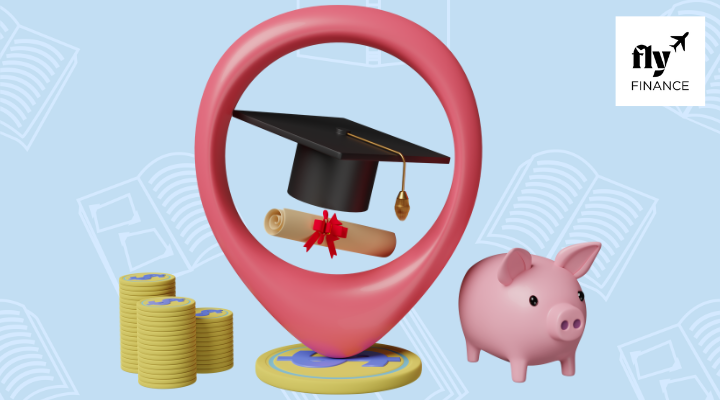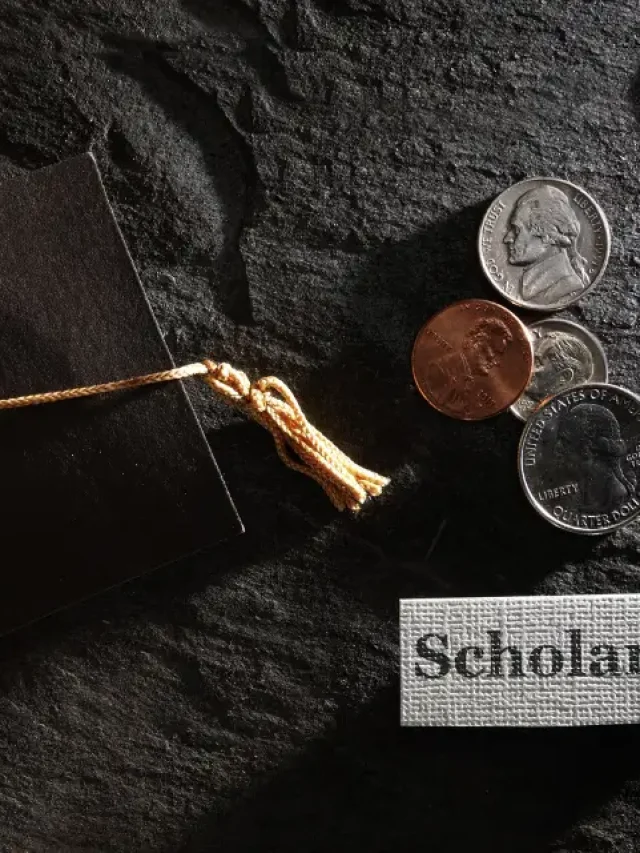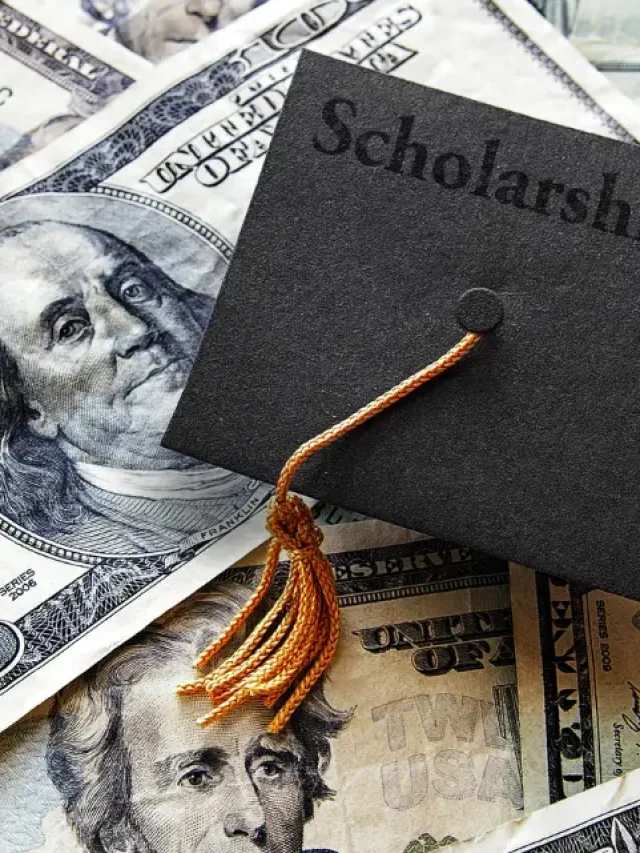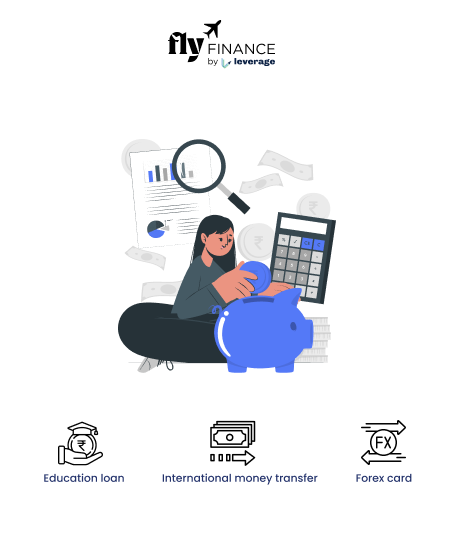Subsidized and Unsubsidized Student Loan: Subsidised Loans are loans for undergraduate students who need money, which is calculated as your cost of attendance less your estimated family contribution and any other financial aid (like grants or scholarships). While enrolled in school at least half-time or during deferment periods, interest on your subsidised loans does not accrue.
Loans for graduate and undergraduate students that are not based on financial need are known as unsubsidized loans. Your cost of attendance less any additional financial help (like grants or scholarships) will be used to establish your eligibility. During in-school, deferment, and grace periods, interest is incurred. In contrast to a subsidised loan, you pay the interest on an unsubsidized loan from the time it is disbursed until it is repaid in full.
| Subsidized Loans | Unsubsidized Loans |
| This is available only to undergraduates | This is available to both graduates and undergraduates. |
| The government pays interest while a student is enrolled. | The government doesn’t help to pay interest. |
| Lower loan limits. | Higher loan limits. |
| Based on financial need. | No requirement for financial need. |
| Loan Type | Borrower | Interest Rate | Interest Rate | Organisation Fee |
| Unsubsidized | Student | 5.50% fixed for undergraduates | 4.99% fixed for undergraduates | 1.057% |
| Subsidized | Student | 5.50% fixed for undergraduates | 4.99% fixed for undergraduates | 1.057% |
| Unsubsidized | Grad Student | 7.05% for grad students | 6.54% for grad students | 1.057% |
Subsidized and Unsubsidized Loan Limits
Below mentioned are the annual and aggregate loan limits as listed below:
| Undergraduate Annual Loan Limits | Independent Student | Dependent Student |
| First Year | $5,500 | $9,500 |
| Second Year | $6,500 | $10,500 |
| Third, Fourth, and Fifth Year | $7,500 | $12,500 |
| Undergraduate Aggregate Loan Limits | $31,000 | $57,500 |
Must Read: UCO Bank Education Loan
Subsidized Loans and Unsubsidized Loans
Subsidised loans are available to undergraduate students who can prove they need them. While the borrower is enrolled at least half-time in school, during the grace period (typically six months after leaving school), and during authorised deferment periods, the U.S. Department of Education pays the interest on these loans. The borrower is not obligated to pay interest during these times because it does not accrue during those times. For students in need of financial assistance, the government “subsidises” the interest rate.
Graduate and undergraduate students can apply for unsubsidized loans, regardless of their financial situation. In contrast to subsidised loans, the borrower is always in charge of paying the interest that accrues on the loan. Although principal repayment on student loans may be postponed until after graduation, interest starts to accrue as soon as the loan is disbursed. The choice for students is to either pay the interest while they are still in school or to let it accrue and be added to the loan balance (capitalised) when repayment starts.
Pros and Cons of Subsidized and Unsubsidized Loans
Below mentioned are the pros and cons of subsidized loans and unsubsidized loans:
| Pros | Cons |
| After you graduate, interest on student loans is paid by the government after 6 months. | Subsidized loans can only be used for undergraduate studies. |
| There is no need to demonstrate financial need for unsubsidized loans. | For a subsidized loan, you need to demonstrate a financial need. |
| Unsubsidized loans can be used for graduate school. | The government doesn’t pay interest accrued on unsubsidized loans. |
Eligibility
For both subsidized and unsubsidized student loan applications:
Apply for financial aid by submitting a FAFSA at https://studentaid.gov/h/apply-for-aid/fafsastudentaid.gov.
To Qualify, You Must
- Be a citizen, national, or permanent resident of the United States; be enrolled at least half-time;
- Be in good academic standing, and not be in default or owe a refund to any prior aid programme.
How to Get an Unsubsidized or Subsidised Loan?
- ONE.UF can be found at http://one.uf.edu.Go to http://one.uf.edu and choose “Log in with Gatorlink.” Use your Gatorlink username and password to log in. Select the appropriate award year under “View Your Summary” in the “Financial Aid” section of the open new window.
- In your aid summary on ONE.UF, scroll to Federal Direct Subsidised or Unsubsidized Loans. Use the “Take Action” button next to the loan to accept, reduce, or reject the loan. Only the bare minimum should be borrowed by students.
- Utilise StudentAid.gov to complete your entrance counselling.http://StudentAid.govStudentAid.gov.
- Utilising StudentAid.gov, complete a Master Promissory Note (MPN).http://StudentAid.govStudentAid.gov.
Repayment of Subsidized and Unsubsidized Loans
There are several options for repaying loans. Below mentioned are 2 repayment options for subsidized loans and unsubsidized loans:
Graduate Repayment Plan
It starts payments off lower then rises them incrementally. Also, has a term of up to 10 years, but you’ll pay more because of how payments are structured.
Income Based Repayment
This sets your payment at 10% to 15% of your monthly discretionary income and also allows you to stretch for 20 or 25 years. One of the biggest advantages is you can lower your monthly payment.
Also Read: STUDY ABROAD LOANS: STUDENT LOAN REPAYMENTS IN USA ARE SCHEDULED TO RESUME IN FALL
FAQs
Ans. A low-interest, non-need-based loan with flexible repayment options is known as a Federal Direct Unsubsidized Loan. Both graduate and undergraduate students can use it.
Ans. Even while you’re in school, if your loans are unsubsidized, you’re still responsible for paying all accumulated interest. Find out what makes subsidised and unsubsidized loans different. Interest can capitalise if it isn’t paid off. When interest capitalises, it raises your loan’s principal balance.
Ans. Federal loans are open to all borrowers, but those who are eligible for the subsidy save more money on interest.
To conclude subsidised loans are based on financial need, and the government pays the interest for a certain period of time. In contrast, unsubsidized loans are not based on financial need, and the borrower is responsible for paying all interest that accrues beginning with the disbursement of the loan.
This was all about subsidized and unsubsidized student loans. Follow Fly Finance for more information and updates.





























